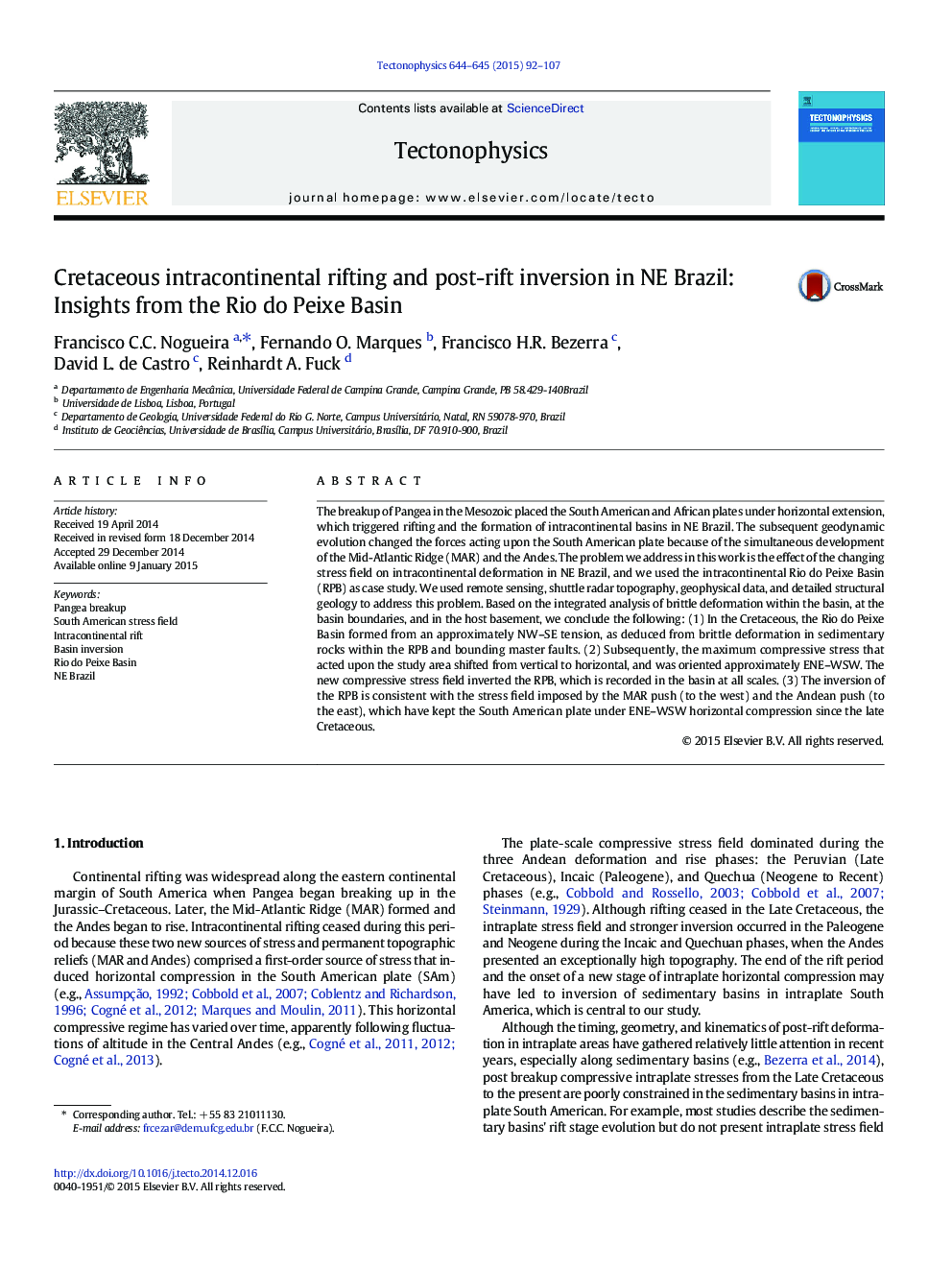| Article ID | Journal | Published Year | Pages | File Type |
|---|---|---|---|---|
| 4691745 | Tectonophysics | 2015 | 16 Pages |
•We describe the evolution of the Rio do Peixe Basin, Brazil.•The stress field evolved from Cretaceous extension to Cenozoic compression.•Inversion is reported for the first time in the basin.•Tectonic inversion has a close relationship with the Andes rise and tectonics.•Inversion in intraplate South America modified basin structures and topography.
The breakup of Pangea in the Mesozoic placed the South American and African plates under horizontal extension, which triggered rifting and the formation of intracontinental basins in NE Brazil. The subsequent geodynamic evolution changed the forces acting upon the South American plate because of the simultaneous development of the Mid-Atlantic Ridge (MAR) and the Andes. The problem we address in this work is the effect of the changing stress field on intracontinental deformation in NE Brazil, and we used the intracontinental Rio do Peixe Basin (RPB) as case study. We used remote sensing, shuttle radar topography, geophysical data, and detailed structural geology to address this problem. Based on the integrated analysis of brittle deformation within the basin, at the basin boundaries, and in the host basement, we conclude the following: (1) In the Cretaceous, the Rio do Peixe Basin formed from an approximately NW–SE tension, as deduced from brittle deformation in sedimentary rocks within the RPB and bounding master faults. (2) Subsequently, the maximum compressive stress that acted upon the study area shifted from vertical to horizontal, and was oriented approximately ENE–WSW. The new compressive stress field inverted the RPB, which is recorded in the basin at all scales. (3) The inversion of the RPB is consistent with the stress field imposed by the MAR push (to the west) and the Andean push (to the east), which have kept the South American plate under ENE–WSW horizontal compression since the late Cretaceous.
